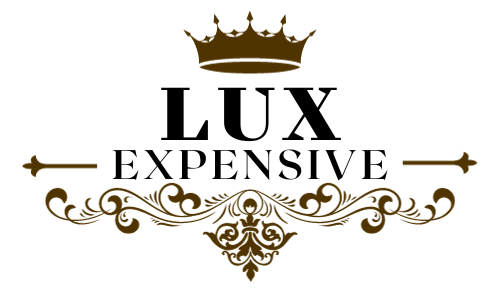Cars are expensive because of the advanced technology and features added, increased production costs for materials and labor, and higher demand that allows automakers to charge more. Additional factors like longer loans that hide real costs, higher dealer markups, safety regulations, tariffs on imported parts, bigger vehicle sizes, and perception of greater complexity also contribute to rising car prices over time. But vehicles are still more affordable relative to income compared to past decades.
Cars these days seem to keep getting more and more expensive. As our incomes struggle to keep up, buying a new car often means taking on a lot of debt or buying used models that are older than we’d like. But have you ever wondered why car prices keep rising while other technologies seem to get cheaper over time? Let’s explore some of the major factors that contribute to high car prices.
Top 10 Reasons Why Are Cars So Expensive
1. Advanced Technology & Features
Today’s cars are packed with fancy tech and features that used to be reserved for high-end luxury vehicles. From advanced safety systems to smartphone integration to self-driving capabilities, automakers are cramming their cars full of the latest gadgets.
All that new tech costs money to develop and implement which gets passed on to buyers through higher sticker prices.
2. Rising Production Costs
It’s not just the final product getting more complex. The costs associated with actually building cars are also increasing over time. This includes pricier raw materials like aluminum along with rising labor expenses at factories.
Increased regulatory compliance costs also play a role here. Automakers have to implement changes to meet tighter emissions and fuel economy standards.
3. Higher Demand for Trucks & SUVs
With gas prices lower in recent years, buyers have been snapping up more trucks and SUVs which tend to command higher prices than basic passenger cars.
Detailing popular picks like the Ford F-150 and Chevy Suburban, the higher profit margins on big trucks allow automakers to cushion losses on cheaper models. Basically, they can charge more because people are willing to pay for these vehicles.
4. Longer Term Loans Mask Real Costs
One reason prices seem astronomical is because most people finance new cars now over 6 or even 7 years. Lower monthly payments make an expensive vehicle feel affordable. But when you calculate the true total cost after years of interest payments, buying that $40k SUV is far pricier than what that monthly payment would indicate.
Taking on less debt by choosing more modest vehicles and/or shorter loan terms helps reveal the true costs.
5. Higher Dealer Markups
Don’t forget the dealers themselves need to make a profit too which is why you’ll often spot mysterious “market adjustment” fees tacked onto sticker prices. When certain models are in high demand or hard to come by, dealers leverage that shortage to pad on extra markups.
Negotiating these fees or shopping at no-haggle dealers can help buyers avoid paying over MSRP.
6. Safety & Emissions Regulation
Government safety and environmental regulations also play a role in driving up costs over time even as they benefit society overall. Adding sophisticated emissions tech or crash test performance equipment doesn’t come free for automakers.
Things like catalytic converters, airbags, and fuel injection systems all help explain why modern cars cost exponentially more than predecessors just a generation or two old.
7. Tariffs Drive Up Parts Prices
Ongoing trade disputes and tariffs on things like Chinese-made components or raw steel and aluminum have disrupted auto supply chains and driven up parts costs. Automakers have to pay more for these imported parts which contributes to higher manufacturing costs.
Given the global and interconnected nature of auto production, political trade wars end up hitting buyer wallets.
8. Bigger Vehicles With More Amenities
Compared to that old compact car you drove years ago, today’s vehicles are simply much bigger and more amenity-packed. With every model year redesign, automakers tend to make vehicles larger with more indulgent features from massaging leather seats to multi-panel moonroofs to booming premium audio systems. More metal, comfort, and luxury features add to rising sticker prices.
9. It’s Still a Lot Cheaper Than Years Past
While any amount of inflation stings, most economists argue vehicles are still more affordable today relative to past decades when accounting for average wages. Compared to decades ago, average car prices may be 80-100% higher now.
But factors like safer lending practices, advanced manufacturing, and market competition helped ensure average incomes rose at a higher trajectory of 140-160% over the same period.
10. Perception of Greater Complexity
Finally, some researchers argue part of why car prices feel outrageous is the perception that modern vehicles must require exponentially greater sophistication than old cars to justify greater costs. But the reality is automotive markups have outpaced actual production expenses.
Meaning the difference between a cheap old car and new model is simply wider profit taking, not necessarily full accounting for things like more expensive parts or technology.
FAQS
Is cars a good brand?
Cars is not a specific brand, but there are many good car brands to choose from including Toyota known for reliability, Honda for longevity, and Ford for their variety of models and trucks to suit different needs.
Are cars good?
Most modern cars are very good in terms of performance, safety, technology, and reliability compared to vehicles made decades ago thanks to engineering innovations by automakers over time.
Are cars worth the price?
For most buyers, paying the price premium for a new car is worthwhile over a used model to get modern amenities, peace of mind with warranties, and avoiding inherit risk of older models.
Where to buy cars?
The best places to buy a car include brand dealerships to see full model ranges, CarMax for generous return policies, and local classifieds for finding deals on used private-party vehicles. Auto shows also allow comparing models.
